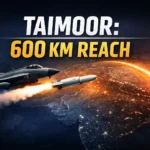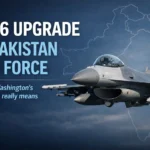By Ch Haroon Rashid
Published: August 7 Sep, 2025 , Lahore Pakistan
On September 5, 2025, a U.S. Air Force C-17 Globemaster III landed at Pakistan’s Nur Khan Air Base in Rawalpindi. Within minutes, Indian defense watchers flagged the unusual landing using MLAT (Multilateration) tracking systems, sparking an online storm of speculation. For New Delhi, the sight of an American military transport aircraft at one of Pakistan’s most sensitive air bases was enough to trigger sleepless debates — even after Washington officially explained the purpose.
U.S. Embassy Confirms: Flood Relief, Not Military Operations
The U.S. Embassy in Islamabad publicly confirmed the reason behind the landing: humanitarian assistance for Pakistan’s devastating monsoon floods. According to the Embassy, the mission was conducted at the request of the Pakistan military. The aircraft carried tents, food packs, dewatering pumps, generators, and medical kits for flood-affected communities.
U.S. Chargé d’Affaires Natalie Baker personally attended the handover ceremony at Nur Khan, offering condolences to families impacted by the floods. Officials further revealed that this was the first of six planned C-17 flights, all dedicated to delivering essential humanitarian supplies.
In short, the American side has been transparent: the C-17 was there for aid, not arms.
Why Indians Are Still Anxious
Despite this clarity, the Indian defense establishment remains restless. Analysts in New Delhi argue that if the flights were purely humanitarian, why choose Nur Khan Air Base — a highly sensitive facility located near Pakistan Army Headquarters and nuclear command sites?
For years, India has been wary of U.S.–Pakistan military cooperation, especially when it involves direct American access to strategic bases. The optics of a strategic heavy-lift aircraft like the C-17 landing in Rawalpindi, under secrecy and tight security, feeds into a familiar Indian fear: that Washington and Islamabad share deeper military ties than they openly admit.
The result? Even with an official U.S. statement on record, Indian analysts remain sleepless, questioning what else might be hidden behind the humanitarian cover.
MLAT Detection: How India Picked It Up
The landing might have gone unnoticed — but MLAT tracking systems changed that. MLAT, or Multilateration, works by triangulating radio signals (such as ADS-B broadcasts) from an aircraft using multiple ground receivers. Even if a plane tries to reduce visibility or fly without openly broadcasting data, MLAT often reconstructs its path with surprising accuracy.
Indian monitoring networks caught the U.S. C-17’s approach to Nur Khan Air Base and circulated the data widely. This technological edge allowed Indian defense forums to fuel speculation before official statements could calm the waters.
Beyond Flood Aid: The Strategic Optics
For Pakistan, the flights are both a lifeline and a diplomatic win. The arrival of American humanitarian supplies strengthens ties with Washington at a time of domestic crisis. For the United States, it provides an opportunity to demonstrate goodwill while keeping channels with Islamabad open.
For India, however, the event carries strategic overtones. Every American aircraft at a Pakistani military facility raises questions about long-term alignments. New Delhi’s unease reflects a deeper truth: in South Asia, even a relief mission can look like a geopolitical maneuver.
Conclusion
The U.S. C-17 landing at Nur Khan Air Base was explained on record as a humanitarian mission. But the political optics tell another story. Despite the U.S. Embassy’s clear statement, Indian analysts continue to speculate, relying on MLAT detections, strategic paranoia, and decades of mistrust in the U.S.–Pakistan relationship.
In the end, what was meant as a gesture of relief has turned into a case study in regional anxiety — proof that in South Asia, even aid flights can look like strategic flights, depending on who’s watching.









